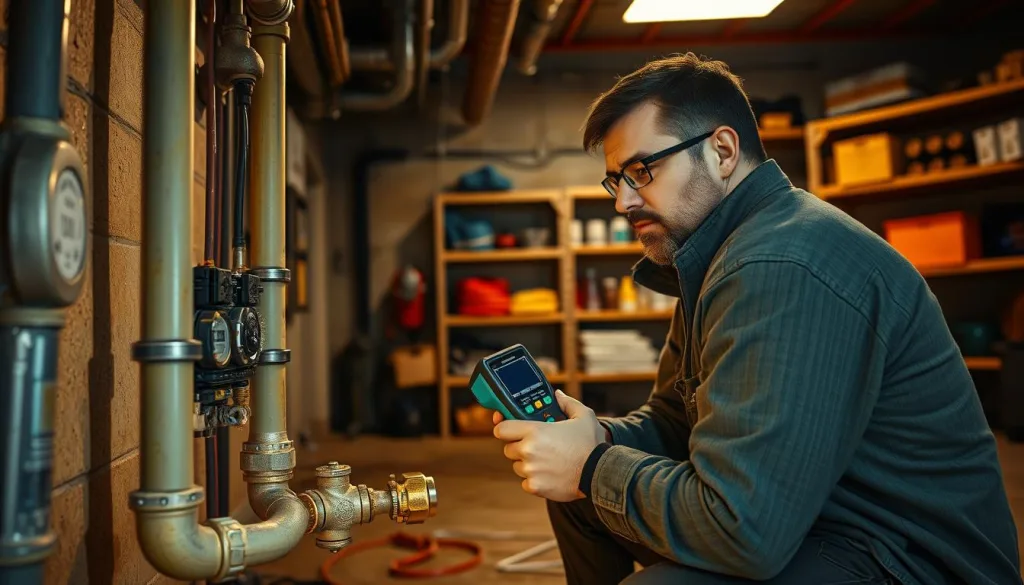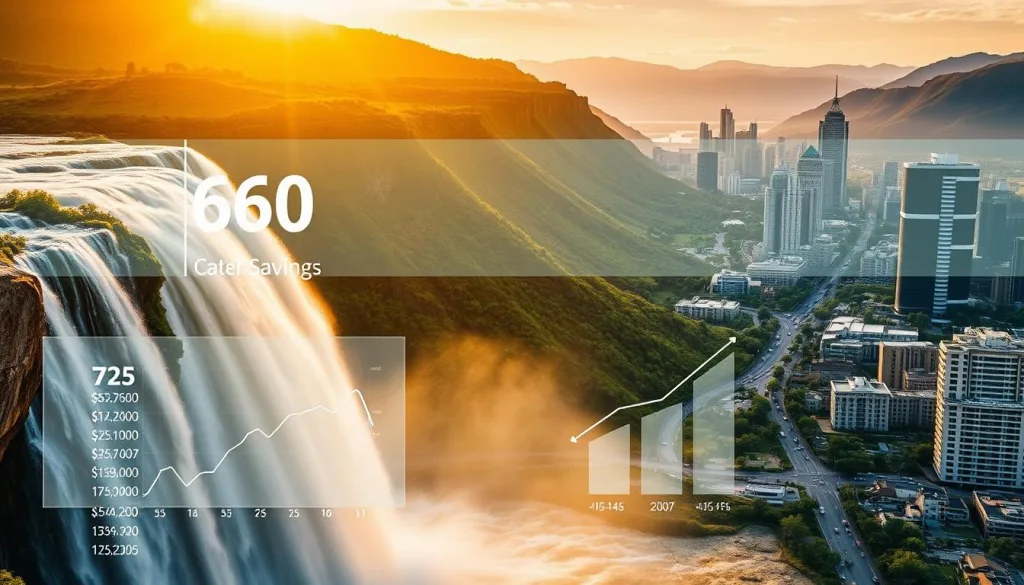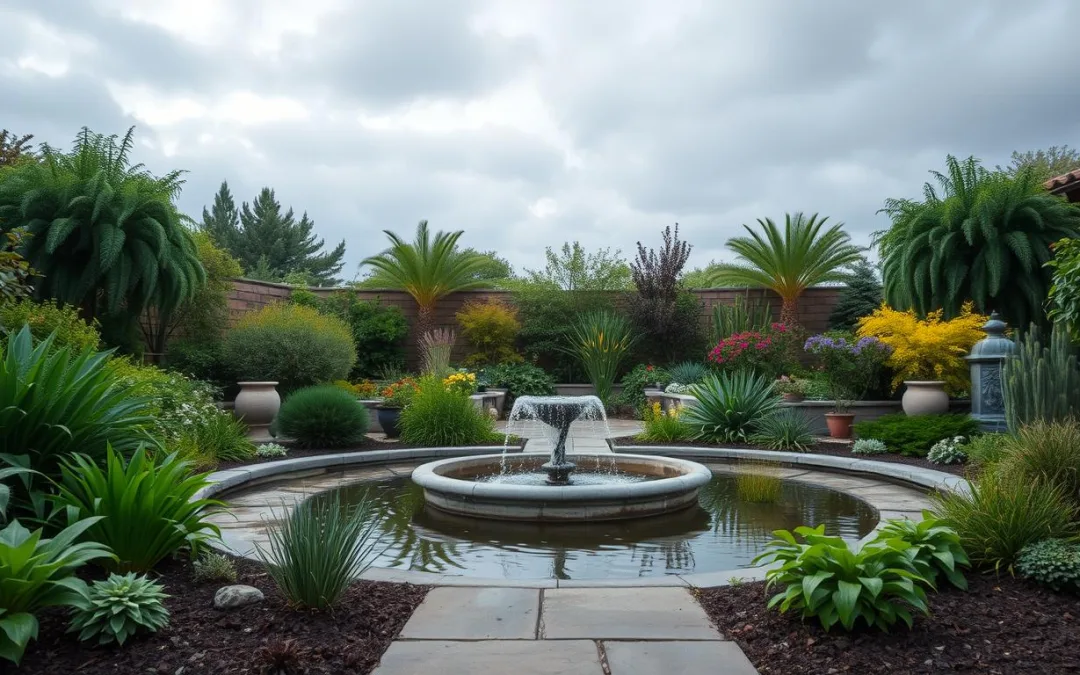Water is our planet’s most precious resource, yet many of us take it for granted. While 71 percent of Earth’s surface is covered in water, only 3 percent is freshwater. Most of this freshwater is locked in ice and glaciers. Sustainable water conservation is not just an option—it’s a critical necessity for our future.
Eco-friendly water practices can dramatically reduce our environmental footprint. From simple household changes to innovative technologies, we have many ways to protect and preserve water resources. Sustainable water conservation starts with understanding our individual impact and making conscious choices every day.
The United States faces significant water challenges, with regions experiencing drought and increasing water scarcity. By implementing smart water-saving strategies, we can contribute to a more resilient and sustainable water ecosystem.
Key Takeaways
- Only 3% of Earth’s water is freshwater
- Individual actions can significantly impact water conservation
- Sustainable water practices protect our environment
- Water-saving technologies are becoming more accessible
- Every drop counts in water conservation efforts
Understanding the Global Water Crisis and Conservation Needs
Water is our planet’s most precious resource, facing big challenges today. The global water crisis is a turning point for saving water and using it wisely everywhere.
The reality of fresh water is tough. Approximately 2 billion people globally lack safe drinking water. This has big effects on health and the environment.
Water Availability Breakdown
Let’s look at the water scarcity numbers that show our big challenge:
- 703 million people lack access to clean water
- 1 in 10 people worldwide cannot obtain safe drinking water
- Women and girls spend 200 million hours daily collecting water
- Over 1,000 children under 5 die daily from water-related diseases
Why Conservation Matters Now
Conservation is now a must, not just a choice. Climate change, more people, and more water use put a lot of pressure on our water systems.
| Water Challenge | Global Impact |
|---|---|
| Water Scarcity | 3 billion people facing water shortages by 2023 |
| Usable Freshwater | Only 0.5% of Earth’s water is available for human use |
| Water Storage Decline | 1 cm decrease per year in terrestrial water storage |
Impact of Water Waste on the Environment
Water waste harms ecosystems, speeds up climate change, and risks biodiversity. By 2050, 1.6 billion people could face flooding. This shows we need to manage water better now.
Every drop saved is a step towards global water security.
Indoor Water Conservation Strategies for Daily Life
Making small changes at home can greatly reduce water use. Understanding how these changes help is key to using water wisely.
Water-saving in the bathroom is easy. High-efficiency toilets save over 4,000 gallons a year. A simple test with food coloring can spot leaks in toilets.
- Replace showerheads allowing more than 2.5 gallons per minute
- Install low-flow faucet aerators (1.5 GPM for bathrooms)
- Use dual-flush toilets that consume 1.28 gallons or less per flush
Kitchens and laundry rooms also offer savings. About 25% of home water use is in the laundry room. Using Energy Star labeled appliances can cut water use by half.
Changing daily habits helps a lot. Turning off water while brushing teeth saves over 3 gallons a day. Families can save more than 20,000 gallons a year by taking 5-minute showers.
Smart water use isn’t just environmentally responsible – it’s economically beneficial for households.
Sustainable Water Conservation: Essential Household Practices
Water conservation is key to saving our planet’s most valuable resource. Every home can make a big difference by using smart water-saving tips in every room.
Green water initiatives begin at home. Simple daily changes can cut down water use and help the environment.
Smart Bathroom Water Usage
Bathrooms are great places to save water. Here are some effective tips:
- Install low-flow showerheads to reduce water flow while maintaining shower quality
- Use ultra-low flush (ULF) toilets that consume less water per flush
- Fix leaky faucets and pipes immediately to prevent water wastage
- Turn off tap while brushing teeth or shaving
Kitchen Conservation Methods
Kitchens are full of chances to save water:
- Run dishwashers only when fully loaded
- Collect and reuse water from washing fruits and vegetables for plant watering
- Defrost food in refrigerator instead of using running water
Laundry Room Efficiency Tips
Make your laundry room more water-efficient with these tips:
- Use washing machines only for full loads
- Choose front-loading machines that consume less water
- Select water-efficient appliances
| Household Area | Water Savings Potencial |
|---|---|
| Bathroom | Up to 30% reduction |
| Kitchen | Up to 25% reduction |
| Laundry Room | Up to 40% reduction |
Using these water-saving tips can help families save up to $380 a year and protect our planet.
Modern Water-Saving Technologies and Devices
Water-saving tech has reached new heights. Smart home systems are changing how we use water. They give homeowners tools to cut down on water use and waste.
Advanced tech is making a big difference in homes and businesses. Let’s look at some top devices for saving water:
- Smart Irrigation Controllers
- Leak Detection Systems
- Water Monitoring Applications
- Greywater Recycling Systems
Water-saving appliances are key in saving water. New tech offers big water-saving benefits:
| Technology | Water Savings |
|---|---|
| Low-Flow Toilets | 50-80% reduction per flush |
| Smart Irrigation Systems | Up to 50% outdoor water reduction |
| Greywater Recycling | 50-80% wastewater diversion |
Artificial intelligence is boosting water management. AI systems can find leaks, manage water better, and monitor in real-time. Some tech can cut water waste by up to 30% with smart predictions and adjustments.
Using these modern tools saves water and money. Many devices get financial help, covering up to 50% of costs.
Outdoor Water Management Solutions
Effective outdoor water management is key for sustainable water resources. American homes use about 320 gallons of water each day. Almost 30 percent of this is for outdoor uses. Smart water-saving strategies can greatly cut down on water waste and protect our water supplies.
Outdoor water management solutions include smart ways to use less water while keeping landscapes beautiful. Green infrastructure practices bring new ideas to save water.
Smart Irrigation Techniques
Intelligent irrigation is a big step forward for saving water. Here are some effective water management solutions:
- Use drip irrigation systems to save up to 30,000 gallons a year
- Install soil moisture sensors to avoid overwatering
- Water plants when it’s cooler to cut down on evaporation
Drought-Resistant Landscaping
Creating water-efficient landscapes cuts down on the need for municipal water. Xeriscaping helps design gardens that need little water:
- Choose native plants that fit the local climate
- Use mulch to keep soil moist
- Group plants by their water needs
Rainwater Harvesting Methods
Rainwater harvesting changes outdoor water management by using rainwater again. Simple steps like using rain barrels can help. They collect water for irrigation, lessening the need for treated water.
By using these sustainable water strategies, homeowners can use less water. They can also keep their outdoor spaces beautiful and healthy.
Detecting and Fixing Water Leaks

Water leaks are a silent threat to our water usage and budgets. They can cause a lot of damage. The average household loses over 10,000 gallons of water each year due to leaks. Finding and fixing these leaks can help save water and money.
Finding leaks requires a careful approach. Here are some ways to detect them:
- Check water meter readings during periods of no water use
- Inspect visible pipes and faucets for moisture or dripping
- Listen for unusual sounds in plumbing systems
- Conduct a simple food coloring test in toilet tanks
Every part of your home has its own leak risks. Experts say to watch out for these areas:
| Location | Potential Waste | Detection Method |
|---|---|---|
| Faucets | 3,000 gallons/year | Visual inspection |
| Toilets | 90 gallons/day | Food coloring test |
| Showerheads | 500 gallons/year | Drip count |
| Irrigation Systems | 6,300 gallons/month | Professional inspection |
Acting fast to find leaks can cut water bills by 10 percent. Early action is vital for saving water. Think about getting smart water tools or regular checks from pros to spot problems early.
Remember: A small leak today can become a costly water conservation challenge tomorrow.
Water Conservation Through Smart Gardening
Smart gardening is a key way to save water. It helps homeowners make beautiful gardens without using a lot of water. Drought-resistant landscaping is a great choice for those who want to save water.
To make your garden water-friendly, try these tips:
- Choose plants that don’t need much water and fit your local climate.
- Use efficient irrigation methods to save water.
- Put mulch on the soil to keep it moist.
- Collect and use rainwater.
Xeriscaping is a big step towards saving water. It uses plants that don’t need much water and smart ways to manage water. This can cut down water use by up to 50%.
| Water-Saving Technique | Water Reduction |
|---|---|
| Drip Irrigation | Up to 80% less water |
| Native Plant Selection | 50% less water |
| Organic Mulching | 30-50% less soil evaporation |
By using sustainable gardening practices, you can make your garden water-efficient. Rainwater harvesting is a great way to collect up to 1,000 gallons of water a year, depending on how much rain you get.
By using these water-saving tips, you can make a garden that’s not only beautiful but also helps the environment. It will also save you money on water bills.
Economic Benefits of Water Conservation

Water conservation is key for both the planet and your wallet. It’s a smart move for homes and communities. Green water projects lead to big savings for everyone.
Reducing Utility Bills
Using less water can cut down your monthly bills a lot. Making a few simple changes can save a lot of money:
- Low-flow showerheads can save up to $145 annually
- Fixing leaky faucets prevents wasting 10,000 gallons of water per year
- Water-efficient appliances reduce water consumption by 20-30%
Long-term Cost Savings
Water conservation saves money over time, not just now. Investing in water-saving tech pays off in the long run:
| Water-Saving Investment | Estimated Annual Savings |
|---|---|
| Low-flow toilets | $110-$250 |
| Drought-resistant landscaping | $300-$600 |
| Smart irrigation systems | $250-$500 |
Available Rebates and Incentives
Many local and federal programs give money back for saving water. Homeowners can get rebates for making their homes more water-efficient:
- Municipal water-efficiency rebate programs
- Federal tax credits for water-saving appliances
- State-level conservation incentive grants
By embracing sustainable water conservation, individuals can simultaneously protect the environment and improve their financial well-being.
Conclusion
Water is essential for life, making up 70% of our bodies. Our journey into sustainable water conservation shows us how to protect it. The world faces a big challenge, with two-thirds of people expected to struggle with water by 2025.
Protecting water starts with what we do every day. Saving just one drop per second can save 2,000 gallons a year. American homes use 300 gallons daily, giving us many chances to use less.
We’ve seen how small steps can make a big difference. New technologies and farming methods help us use water wisely. By using these ideas, we can help the environment and use less water.
Managing water well is a team effort. Every home, community, and area must do its part. Let’s make these water-saving habits a part of our lives, not just a quick fix.
FAQ
How much water can I actually save by implementing conservation strategies?
Are water-saving technologies expensive to install?
What are the most effective indoor water conservation strategies?
How can landscaping contribute to water conservation?
What are the environmental benefits of water conservation?
Can water conservation actually save me money?
How do I detect water leaks in my home?
What are some innovative water conservation technologies?
Source Links
- Make every drop count: Water conservation tips – https://davidsuzuki.org/living-green/make-every-drop-count-water-conservation-tips/
- 25 ways to save water – https://www.volusia.org/services/growth-and-resource-management/environmental-management/sustainability-and-resilience/water-conservation/25-ways-to-save-water.stml
- Water Saving Tips | City of San Diego Official Website – https://www.sandiego.gov/public-utilities/sustainability/water-conservation/tips
- Global water crisis: Facts, FAQs, and how to help – https://www.worldvision.org/clean-water-news-stories/global-water-crisis-facts
- Water and Climate Change | UN-Water – https://www.unwater.org/water-facts/water-and-climate-change
- Indoor conservation tips – https://www.snwa.com/conservation/indoor-conservation-tips/index.html
- 15 Ways to Conserve Water at Home – https://www.budgetdumpster.com/blog/water-conservation-tips-daily-life
- 10 Ways to Conserve Water for a Sustainable Living – https://www.culligannation.com/10-ways-to-conserve-water-sustainable-living
- Water Conservation: Essential Strategies for Sustainable Living – Water & Wastewater – https://www.waterandwastewater.com/water-conservation-essential-strategies-for-sustainable-living/
- Plumbing Innovations: Advancements in Water-Saving Technologies – https://www.zuper.co/blog/advancements-in-water-saving-technologies
- The future of water conservation: innovations and technology – Smart Water – https://smartwateronline.com/news/the-future-of-water-conservation-innovations-and-technology?srsltid=AfmBOoonf0a59mMRavIhGCzpJs1HyXN_kkJGGNs4UpkDtQkkiVYMKyE5
- 7 Tips for Saving Water in Your Landscape – https://www.asla.org/watersavingtips.aspx
- Understand the Basics of Sustainable Water Management – https://www.homewater.com/blog/understand-the-basics-of-sustainable-water-management
- Leak Facts | WaterSense | US EPA – https://19january2017snapshot.epa.gov/www3/watersense/pubs/fixleak.html
- Effective Leak Detection Strategies for Sustainable Water Management – https://medium.com/mark-and-focus/effective-leak-detection-strategies-for-sustainable-water-management-723fd75d7dd3
- Tips for Collecting Rainwater for Your Garden – https://www.ecofriendlyhomestead.com/sustainable-garden/learn/conserving-water-in-your-garden
- How to Create a Water-Saving Garden: A Step-by-Step Guide – Smart Water – https://smartwateronline.com/news/how-to-create-a-water-saving-garden-a-step-by-step-guide?srsltid=AfmBOoq6f2gfblx4jEJ6KITL7xAvngJqGa2WpudoC4QU7uH0zgnQNEQz
- Making Water a Part of Economic Development: The Economic Benefits of Improved Water Management and Services | SIWI – Leading expert in water governance – https://siwi.org/publications/making-water-a-part-of-economic-development-the-economic-benefits-of-improved-water-management-and-services/
- Overview – https://www.worldbank.org/en/topic/water/overview
- What Is Sustainable Water Management & Why Is it Important? – https://quenchbuggy.com/what-is-sustainable-water-management-why-is-it-important/
- The Importance Of Water Conservation | NuWater Water Treatment – https://nuwater.com/the-importance-of-water-conservation/


